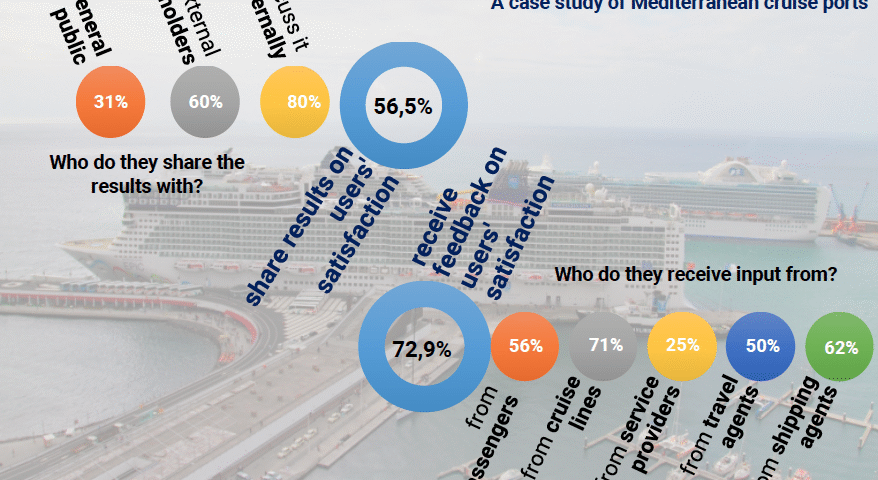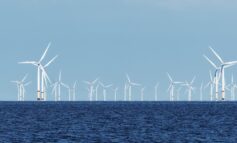By Α.Α. Pallis and A.Α. Papachristou
Mediterranean cruise ports have gone a long way in measuring the perspectives of their users.
Our PortGraphic details a survey of 71 cruise ports in the Med and its adjoining seas, the second biggest cruise region of the world. The PortGraphic reveals that the measurement of users’ satisfaction has turn to a standard practice for most cruise ports.
Eight out of 10 cruise ports conduct regular users’ satisfaction surveys. 56% of them receive feedback from the passengers, 71% from the cruise lines, 62% from shipping agents, 50% from travel agents and 25% from service providers- here reference is to measurement what goes beyond the standard measurement of passengers satisfaction that is undertaken by cruise lines.
Whereas 80% discuss the findings of these exercises internally, six out of ten share them with external stakeholders. One out of three cruise ports make these results available to the general public.
With cruise activities in the Med growing, and the supply chain associated with cruise ports expanding, this is a positive sign. Cruise ports continue to adapt to new levels of demand, and not least the hosting of bigger size cruise vessels, with the majority of them seeking ways to accompany the contribution of cruising to port-cities and local communities with positive experiences for all their users.
Why measuring cruise ports users’ satisfaction matters?
Performance measurement has always been a key issue for all types of ports. Port managers, whether port authorities or terminal operators, need to organize complex processes in an efficient and effective way, in order to find the best ways to capture value for their customers and address the concerns of stakeholders.
For many, port performance is associated with operational efficiency alone. Physical quantities of items used, levels of effort expended, scale or scope of activities, and the efficiency in converting resources into port services have always captured center stage. Several indicators are used to benchmark current performance against prior-year performance and against competitor performance, so as to deliver efficiency objectives.
However, competitiveness is also a product of effectiveness in delivering desired services to both customers and users. Stakeholders’ perceptions and satisfaction are increasingly vital for correcting flaws that the port’s network might experience.
Measuring users’ perspectives helps managers to understand the current situation and eventually address issues so as to improve experiences with the port. Insights into users perspectives assists cruise ports in setting priorities, e.g., pointing out areas needing the greatest investment for improvement, and identifies those areas where a cruise port already delivers value. In the latter case , the port could benefit from marketing initiatives to raise awareness.
Still, room for improvement
Not surprisingly, Mediterranean cruise port authorities increasingly acknowledge the importance of measuring the levels of satisfaction of their users. Still there is room for improvement in many respects.
First, there is scope to expand these exercises to involve all stakeholders, and spread the concept of measuring users’ perspectives in all respects.
Second, it is important to identify the right indicators: finding the right user indicators will allow meaningful insights on users experiences with port services.
Third, it is worth to go more sophisticated. For instance to measure the gap space between the importance of certain port features and that of the performance of the cruise port as regards the particular feature, so that the cruise port management team understands the meaning of what respondents said and develop strategic plans for investment and marketing.
All these can be achieved by sharing best practices, and increase awareness of the cruise community on the importance of such exercises. Cruise ports associations – such as MedCruise in the case of the Med ports – provide efficient and effective platforms to achieve this.












